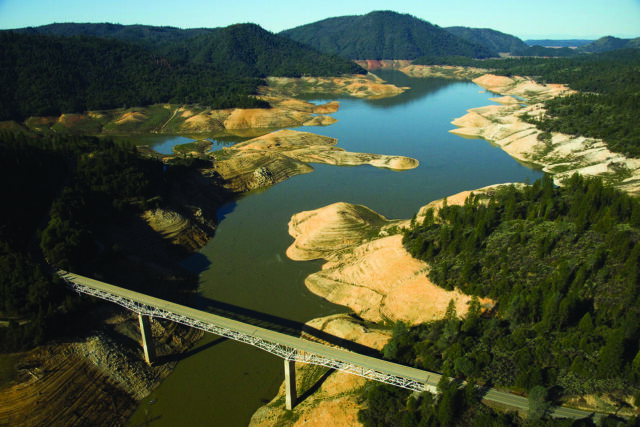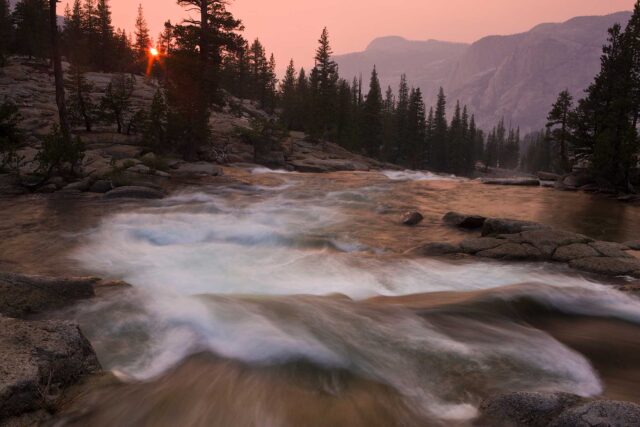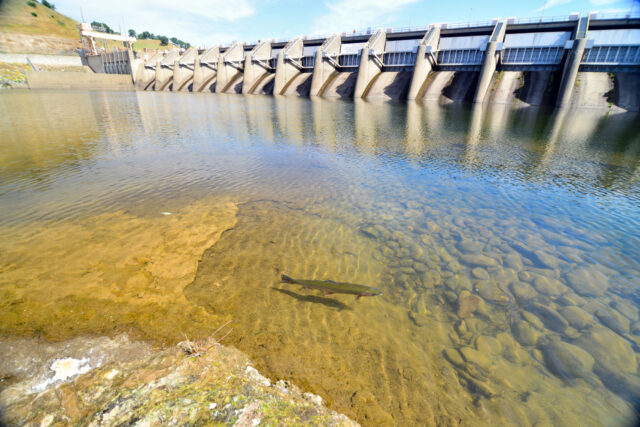After a year of extreme drought, massive wildfires, and even a brief spate of record-breaking rainfall, Californians no longer question whether the climate is changing—climate change is here. The escalating crises add urgency to the issue of how Californians manage their water. From November 15–17, the PPIC Water Policy Center convened three expert panels (as part of our annual water priorities conference) to discuss how we can “seize the drought” to meet the challenges we’re already facing.
The panels tackled several key subjects head-on: how to make our water infrastructure climate-ready, how to pay for resilience while keeping water services affordable, and how to embrace transformative change.
PPIC Water Policy Center senior fellow Alvar Escriva-Bou kicked things off in the first session with a single stark question: “Is climate change outpacing us?” Karla Nemeth, director of the California Department of Water Resources (DWR), reframed the question slightly: “Are we ready? The answer to that is, ‘Not yet.’” Daniel Swain, climate scientist at UCLA’s Institute of Environment and Sustainability, outlined the challenge: “The vast majority of the water infrastructure in California was designed and developed in the 20th century….The climate then was significantly different than it is today, and the climate of a decade from now will be even more so.” The state is experiencing, in Swain’s words, “increasing precipitation whiplash.”
Some of the state’s biggest reservoirs ended the water year with historic lows, and the challenges didn’t just hit agriculture hard: the environment saw tragic results. Ali Forsythe of Sites Project Authority argued that the state needs to diversify its water supply portfolio for protecting the environment in the same way municipal water districts have done. Tim Ramirez of the Central Valley Flood Protection Board said that one climate adaptation solution is to make rivers “bigger”—to give them the space they need to help manage floods and droughts better. Groundwater, said Nemeth, is key: “Getting that groundwater recharge going in California is going to be one of the single most important investments we can make.”
As the state confronts growing climate volatility, other concerns are also rising: affordability and safe drinking water. Rachel Ehlers of the Legislative Analyst’s Office shared some good news: not only does the state have new authority to consolidate water systems, but there is also significant new state funding for addressing drinking water problems, both through a 10-year program approved in 2019 and a new infusion of funds in the most recent state budget. And the recent passage of the federal infrastructure bill will be another welcome source of new funding, said Alesandra Nájera of the Water Foundation.
But despite new funds, an affordability crisis looms on the horizon, according to Rosemary Menard of the City of Santa Cruz. She said 16% of the city’s residents are already struggling to pay their water bills, and costs are set to increase as the community undertakes needed investments to build climate resilience. The best solution, she said, is to reform Proposition 218 to give water agencies more flexibility to promote low-income water rate assistance. Moderator Ellen Hanak noted that Valley Water has been successful in getting supermajority voter approval for taxes that support a broad range of water services in Santa Clara County. Aaron Baker of Valley Water praised the county for recently approving Measure S. “The great thing about Measure S,” Baker said, “is that not only does it have programs in there to get clean water and flood reduction for all, but it covers operations and maintenance in perpetuity.” The panelists agreed that planning for further climate disruption and protecting communities will be key.
Those visions for the future dovetailed nicely with the conference’s final day, which looked forward. And for a panel that included two general managers of very different water districts, a habitat restoration expert, and a farmer, the group achieved remarkable consensus. Don Cameron of Terranova Farms has pioneered groundwater recharge on his fields. “Farmers are going to be the solution, not just for water but for climate change.” The other panelists stressed the importance of the nature-based solutions Cameron was championing. “Nature is the engineer of the 21st century,” said Letitia Grenier of the San Francisco Estuary Institute, who’s also an adjunct fellow at the PPIC Water Policy Center. “Nature-based solutions will help us get seven benefits for every dollar we put in. We need to put all the pieces of the ecosystem back together.” Andy Fecko of Placer County Water Agency agreed. “We’re coming full circle,” he said.
And the key, said Adel Hagekhalil, general manager of Metropolitan Water District, is partnerships. “We have to figure out how to coexist. It’s not just about having a healthy water supply to the detriment of the environment.” Fecko said that with state and federal funding, local agencies can often implement changes more quickly and effectively than other agencies.
Said moderator (and chair of the Water Policy Center Advisory Council) Celeste Cantú, “It seems like you have found success where you’ve been able to develop partnerships and trust among groups that have historically not worked well together. That to me is really key: transforming those historically contentious relationships into positive relationships.”.
We invite you to watch the videos from this event:
Session 1: Making Our Water Infrastructure Climate-Ready
Session 2: Paying for Water System Resilience
Session 3: Embracing Transformative Change




